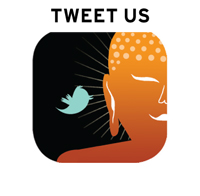
Our Spring 2016 issue’s debate on whether mindfulness should be taught in public schools, with responses from Saki Santorelli and Candy Gunther-Brown, sparked a lot of conversation on our website and Facebook page. Below, Tricycle readers weigh in on the question: “Does mindfulness belong in public schools as an educational tool, or does it violate the separation of church and state?”
The discussion doesn’t address a few important issues. First, mindfulness education in the United States almost invariably includes a compassion or lovingkindness component that is based on Buddhist metta practice. The standard form of metta practice is based on a specifically Buddhist understanding of what compassion means. One example of this is the public school curriculum developed by the Center for Healthy Minds at the University of Wisconsin, Madison. Second, Dr. Santorelli’s own MBSR teacher training program requires an extended silent meditation retreat. Those retreats are offered only at Buddhist or Buddhist-trained centers. If public school mindfulness teachers are required to attend training at Buddhist institutions to get certification, shouldn’t that set off alarms about separation of church and state issues?
–Len Moskowitz
Teaneck, NJ
I fully agree with the separation of church and state, but to which church does mindfulness belong? I would think of mindfulness, in the Western sense of the word, as entirely secular.
–Jim Pratt
Guelph, Ontario
No matter what we believe, everything we teach our kids is rooted in some sort of paradigm that not everyone will agree with. That fact aside, mindfulness has roots in many spiritual traditions (centering prayer in Christianity, for example) but is now widely recognized by modern psychology as a good mental health tool. So it’s now not only a matter of faith; it’s evidence-based as well. Kids would benefit from it.
–Aaron Kimberly
Vancouver, British Columbia
You can play this both ways. My life is a case in point. I’ve meditated for 42 years within the Shambhala Buddhist tradition. I recently retired after 22 years as a school counselor. For two or three years I ran a voluntary meditation group at the local middle school that met once a week for three months. The pre- and post-data I collected from students’ written self-reports showed markedly lowered stress levels as well as positive changes in mood and ability to concentrate. In advocating with administration for this group, I made no secret of my religion. At the same time, I presented mindfulness as a tool that could help students, not as a religion. Parents had no questions and approved 100 percent when students brought home permission slips. Personally, however, I do not equate mindfulness with meditation, as is so popular these days. Meditation is so much more than mindfulness, and the Shambhala Buddhist teachings within which it is presented give meditation so much more power and traction.
–Tom Edwards
Fear Melts Away
Thank you, Ayya Medhanandi, for your dharma talk in the Spring 2016 issue (“The Dharma of Snow”). I am dealing with an illness that is ultimately terminal, and I am so bogged down in fear. Your teaching has provided not only comfort but also a path to a more peaceful life. I know the path is there, but I haven’t been diligent. Your words have prompted me to practice meditation daily to free myself of this constant angst and enjoy the life I have. Thanks.
–Name and location witheld
Buddhists’ Liberation Front
It is great that this issue is being highlighted (“The Story of One Burmese Nun,” Spring 2016). It is shocking that there are monks in this day and age who still believe women (nuns) should not be fully ordained.
–Sarah Hart

The story of one Burmese nun – an upsetting account tricy.cl/1UoYF0q
– @angiepedley
Each of us is trapped in the system of interconnectedness by our own actions http://tricy.cl/1UoZ3Mm
– @tricyclemag
ShambhalaNYC Loved diving into this thought-provoking piece on interconnectedness
– @tricyclemag
Take this, #oneness: “The Buddha himself never taught that we are all One.”
– @mokudodavid
Send letters to editorial@tricycle.com, post a comment on tricycle.com, or tweet us at @tricyclemag.
Illustrations by Roberto La Forgia
Thank you for subscribing to Tricycle! As a nonprofit, we depend on readers like you to keep Buddhist teachings and practices widely available.